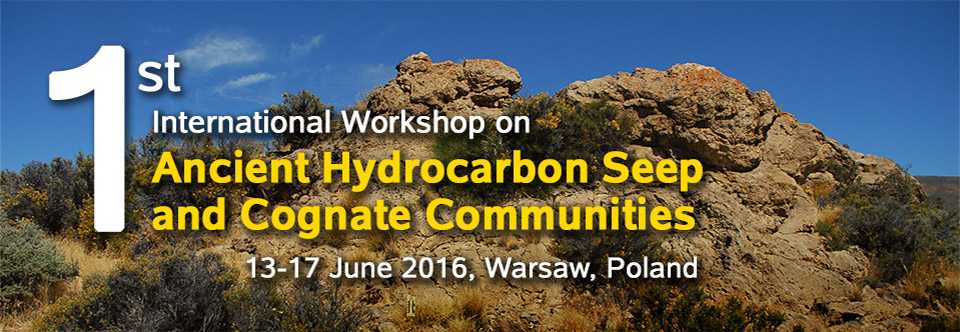
HYDROCARBON SEEPS FROM THE UPPER CRETACEOUS (CAMPANIAN–MAASTRICHTIAN) WESTERN INTERIOR SEAWAY
Jamie A. BREZINA1 and Neal L. LARSON2
1Department of Mining Engineering and Management, South Dakota School of Mines and Technology, Rapid City, SD 57701, USA; 2Larson Paleontology, 12799 Wolframite Road, Keystone, SD 57751, USA.
Corresponding author: rezinagate@hotmail.com
Hydrocarbon seeps are complex systems, created by various geological events with each locality
seemingly different than the next. Hydrocarbon seeps, also known as Teepee Buttes, bioherms,
cold seeps or methane seeps, were first recognized in the late 1800’s in North America (Gibert
and Guliver 1895), but it was not until the first discovery of modern seeps in the 1980’s that researchers
began to really understand these unique ecosystems. Seeps are common in the Western
Interior Seaway (WIS) along the eastern flank of the Rocky Mountains and around the Black Hills
region from the uppermost, middle Campanian through the lower Maastrichtian (Landman et al.
2012). During this time period, thousands of seeps on the seafloor created distinct environments
that allowed marine fauna to flourish, with some seeps being small and habitable while others
were massive, toxic or anoxic. Most seeps appear to occur in seep fields, with several to hundreds
of seeps occurring together. Current research has mapped these localities along the front range
of the Rockies from central Colorado to central Montana with some areas containing a high concentration
of seeps, while other areas have only a low number of individual seeps. While some
seeps show no evidence of complex fauna indicating that all carbonate precipitation was below
the sediment/water interface or the environment was not favorable to attract higher fauna, most
seeps are dominated by bivalves (inoceramids and chemosynthetic lucinids), whereas others have
yielded an extensive variety of life. The fauna at the seeps can be diverse including sponges, bacteria,
algae, protozoans, dinoflagellates, bryozoans, cnidarians, annelids, echinoderms, mollusks,
crustaceans, fish, marine reptiles and probably soft bodied organisms that are not preserved. The
possible geologic circumstances that could lead to the formation of the seeps in the WIS include
faulting, dewatering of the sediments below, destabilization of trapped methane clathrate (methane
hydrate or ice), or sediment loading , which may have facilitated upward transport of chemically
modified pore waters.
References
Gibert, G.K. and Gulliver, F.R. 1895. Tepee Buttes. Geological Society of America Bulletin 6: 333–342.
Landman, N.H., Cochran, J.K., Larson, N.L., Brezina, J.A., Garb, M.P., and Harries, P.J. 2012. Methane seeps as ammonite habitats in the U.S. Western Interior Seaway revealed by isotopic analyses of well-preserved shell material. Geology 40: 507–510.
